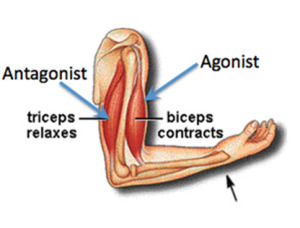The whole purpose of participating in physical/athletic activities is to have fun, remain active, enjoy social dynamics, and just emerge feeling good.
When your body is cared for through proper exercise, you are able to demand performance and typically emerge feeling great and excited to go again.
However, if not sufficiently conditioned, these demands for performance can become more demanding and less enjoyable, while aches, pains, and injuries become more common.
If you are not currently exercising, these suggestions provide you with a basic place to begin, just shy of a personalized program. For those who are already exercising regularly, hopefully, you will pick up some takeaways which you find useful.
As a friendly reminder, it is always a good idea to have a visit with your doctor anytime you begin a significant increase in activity (exercise or sport). This is important just to ensure that there aren’t any underlying issues that have developed which may become a serious health issue as a result of the increased demand.
Your Pre-Game Ritual:
– ALWAYS, ALWAYS, ALWAYS WARM UP! A critical mistake too many make regarding both exercise and in recreational sports is to skip past the warmup.
Taking the time for a proper warmup will increase performance dramatically, while significantly lowering injury risk.
How to do it:
Pick 5 or 6 full-body calisthenics movements (squats, toe touches, march in place, shuffle jacks, toe & arm raise, etc.) and do them in direct succession (one immediately after the next) at a modest intensity for 30 – 45 seconds each.
This elevates heart-rate/core temperature, lubricates joints, promotes muscle elasticity, improves neuromuscular control (motor skill), and enhances mental focus.
– Always stretch immediately AFTER your warmup (never stretch cold muscles) if participating in a sport. Be sure to include hamstrings and pecs/chest. These are two of the most important as they help to properly care for the shoulders, knees, hips, and lower back.


Training For Your Game!
Injury prevention exercises:
Isometric (without movement) exercises are at the very tip-top of the list for injury prevention training. The continual, gradual, and steady tension placed on connective tissue (ligaments and tendons) helps to promote tensile strength. In addition, this same approach to loading also builds bone and joint cartilage density.

Performance builders:
Squats are not only among the most fundamental of functional movements, they are also at the top of the list for lower-body performance conditioning exercises.
Why? This particular exercise utilizes the largest muscles in your body for movement and when done at progressive volume/intensity can provide baseline cardio and endurance conditioning simultaneously.

Lateral cone-to-cone shuffle drills are an incredibly important component to developing agility, foot speed, and cardio conditioning.
However, most importantly lateral movement proficiency in both acceleration and deceleration is practiced and conditioned, this is the key to limiting injury risk!
This simple drill done regularly can make a tremendous difference in court sports, baseball/softball, and even golf (lateral exercises improve rotational hip power).

Standing functional row (band, cable, TRX). Because most everything we do in life happens in front of us, it is quite common for the anterior muscles of the body (front side) to become disproportionately developed and cause joint/movement issues.
This simple, yet highly effective exercise not only helps to address that by promoting pulling strength for the back side of the body, the unilateral (one side at a time) loading does an awesome job of producing spinal stability while generating rotational force (golf drive, tennis/pickle ball racquet swing, etc.).

With each of the above exercises, it is best to establish a performance benchmark and seek to increase work demand from there.
For example, if you were to hold a bridge exercise for as long as you could and time that to be 75 seconds, this is your benchmark. Each time you would repeat this exercise, your goal would be to exceed this marker. Or, if you did timed squats and could perform 22 in 1 minute, next time seek to make that 25, etc.
Ultimately, it’s important to understand that as you age, the risk-reward balance and enjoyment factor are no longer in your favor without exercise. But, should you choose to Train Your Game, your body can be trained to perform to extraordinary levels enjoyably!

Joe Carson B.S. NASM-CPT/FAS/CN
Master Trainer/Functional Aging Specialist/Certified Nutritionist
Twenty-First Century Aging





